Get ready for the Grand Canyon Star Party on June 10–17, 2023.
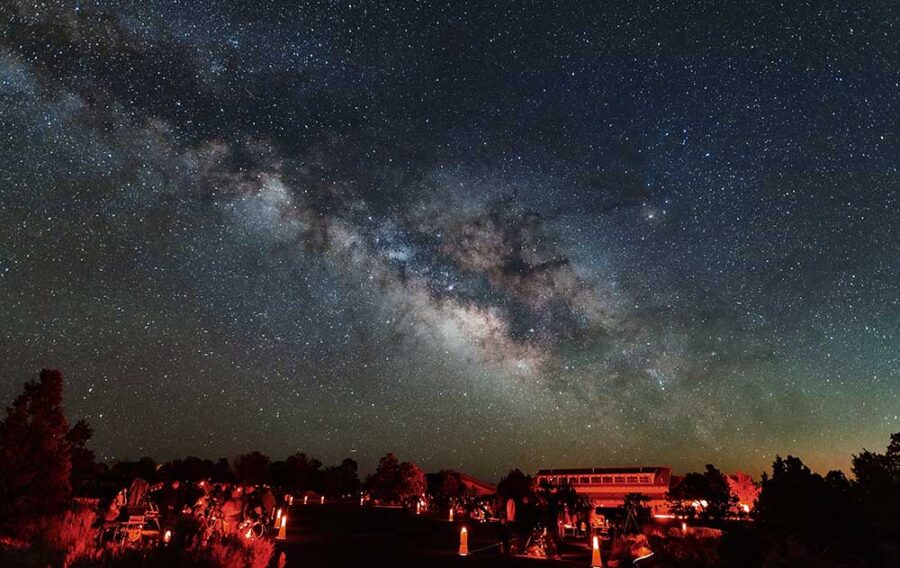
This photo and all following are courtesy of Richard S. Wright, Jr.
The Grand Canyon National Park hosts a unique outreach-oriented star party annually, and this year marks the 33rd such annual event, to be held June 10–17 on both the South and North Rims of the park.
After a brief two-year hiatus where the event was held virtually due to the pandemic, last year the star party returned to an in-person event. Unlike a traditional star party, this event is focused on outreach and night-sky awareness for the general public. Amateur astronomers enlist as volunteers and serve as interpretive rangers for the week, while the general public visiting the park is brought in by the bus load (literally) to the South Rim visitors center. More than 10,000 visitors are treated to a spectacle of the night sky most of whom have never witnessed before, or experience their first ever view through a telescope. I will be returning this year for my fourth time as a volunteer astronomer/ranger at the South Rim event.
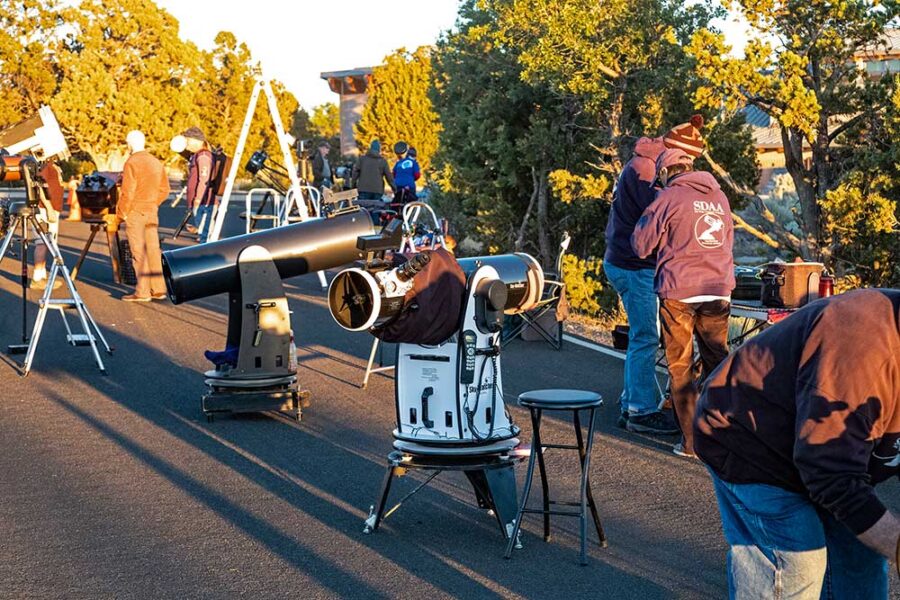
The North Rim event is much smaller and held on the patio of the Grand Canyon Lodge - North Rim, which directly overlooks the canyon. There’s room for a dozen or so telescopes, and the astronomers there (mostly from the Saguaro Astronomy Club) cheerfully show off the night sky to the people staying at the lodge or in one of the nearby cabins. While it’s only a mile away as the crow flies from the South Rim, it’s a four-hour drive if you want to visit both events.
The North Rim is far more remote than the South Rim, at higher elevation, and cannot accommodate the crowds of the South Rim’s spacious visitors center. As a result, an overflow star party has sprung up at the nearby Kaibab Lodge outside the national park. (Find more information about the North Rim events can be found.)
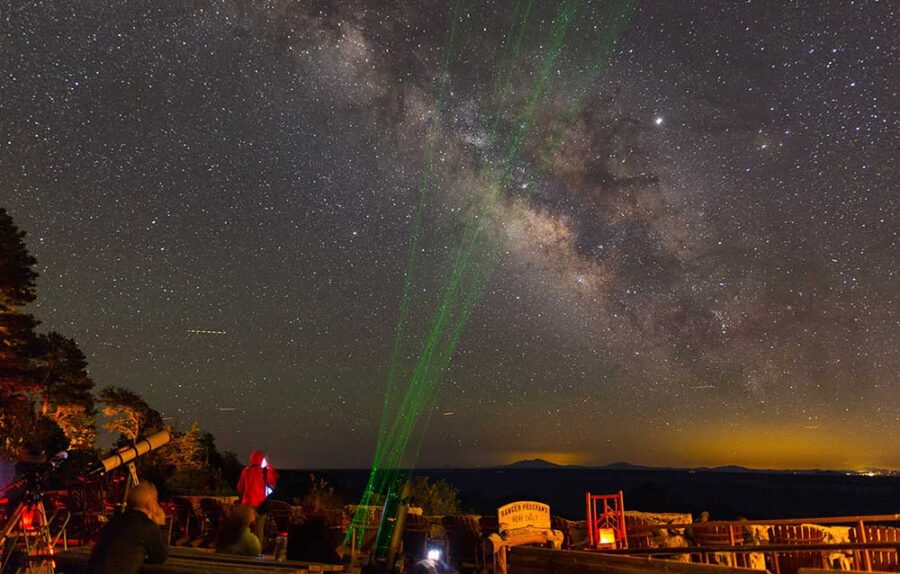
Around 100 astronomers, most from the Tucson Astronomy Association, volunteer at the large South Rim event. If you arrive before dark, the volunteers lead a delightful tour of a wide variety of telescopes, both commercial and custom-constructed. You might find a “Light Bucket” telescope made from literal buckets or beautiful wooden “Ginoculars” for binocular viewing of the sky. There’s always a few big Dobsonians as well, and a handful of people doing video or live views with a camera system on their scope.
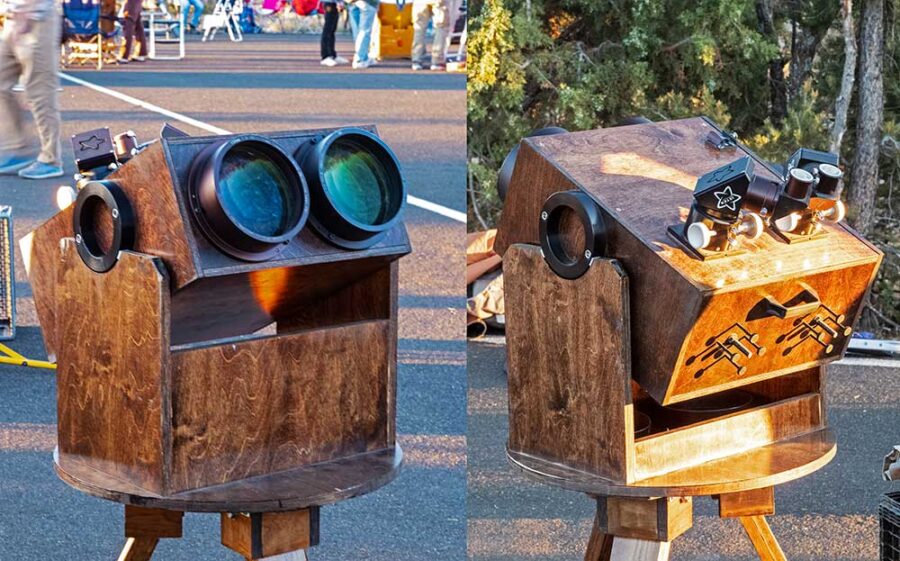
Buses run throughout the South Rim area, and bus service continues during the star party until 11 p.m. Visitors can ride to and from the lodges and campgrounds inside the park, or even outside the park in nearby Tusayan. During the day, different visitor centers and lodges around the park offer solar observing as well. At night, this is surely one of the world’s largest public outreach events, with some 1,000 people visiting every clear night during the week.
The Darkest Skies
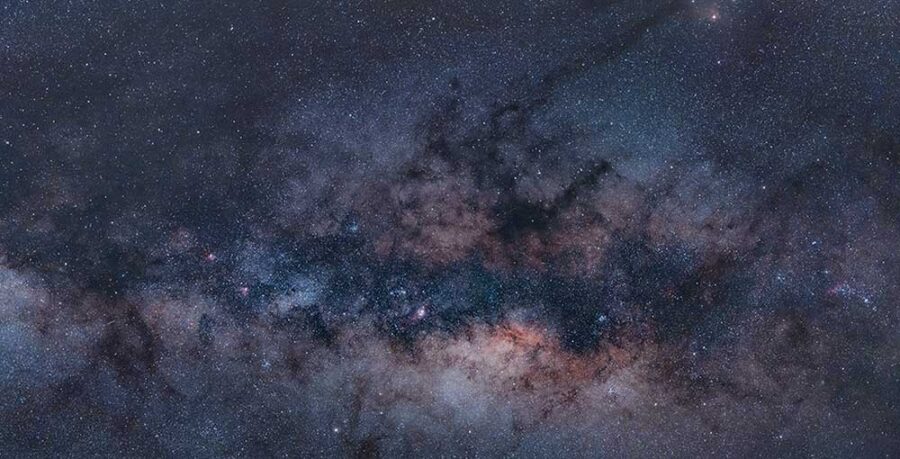
In 2019 The Grand Canyon National Park was officially certified by the IDA as a “Dark Sky Park.” This was the result of a three-year effort, started in 2016, to catalog and retrofit light fixtures throughout the park. Because of this, the skies are fantastically dark and it’s really an observer’s or imager’s paradise, with only minimal sky glow very low on the horizon and clear dry air at an elevation of more than 6,000 feet. This is summertime however, so it doesn’t get dark enough to do a lot of observing until about 8:30 to 9 p.m., with astronomical twilight not fully occurring until 10 p.m.
Every night there is a featured speaker at 8 p.m., with talks often focused on Arizona’s rich involvement in the early Apollo missions, public environmental awareness, native American sky lore, or details from the latest space missions. There are also constellation tours every night.
Volunteer with Us
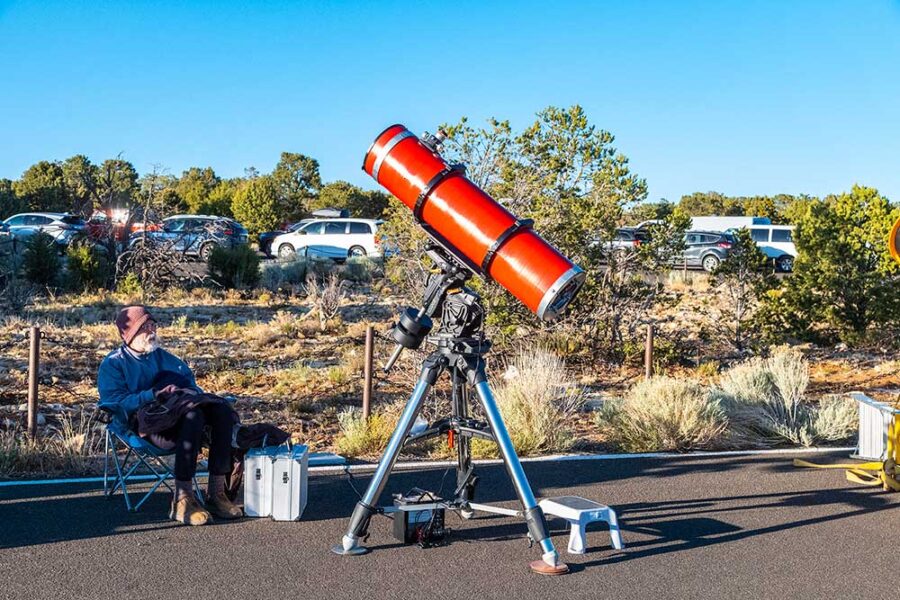
Volunteers set up daily, starting about 6 p.m. There’s a kickoff meeting at 7 p.m. and they are on duty until 11 p.m., after which they help tear down. After 11, the buses stop running and the visitors drop off, and many volunteers pack up. But there’s always a core group that will stay until the Moon comes up, or until the clouds roll in later that night or in early morning. “Half the park is after dark” they say, and the Grand Canyon is a nightscape paradise. The summer Milky Way is on full display as soon as it gets dark, and after the public portion of the evening, many volunteers will take the opportunity to observe and photograph the night sky.
I would be negligent if I didn’t mention that you must take great care if you wander off on a visit. While there are a number of easily accessible locations for both day and nighttime photography, sometimes the only thing that separates you from falling to a certain death is your common sense. I’ve lost a son who thought he was capable to going off on his own in the wilderness, so do not make that mistake. So if you plan to explore, scout out some flat areas during the day that are well away from ledges, or where there are ample guard rails, and take a friend.
I’ve had the privilege of traveling all over the U.S. to visit star parties, and I can say without hesitation that the dark skies at the Grand Canyon National Park are unmatched. Visit the Grand Canyon website for more information or to volunteer.
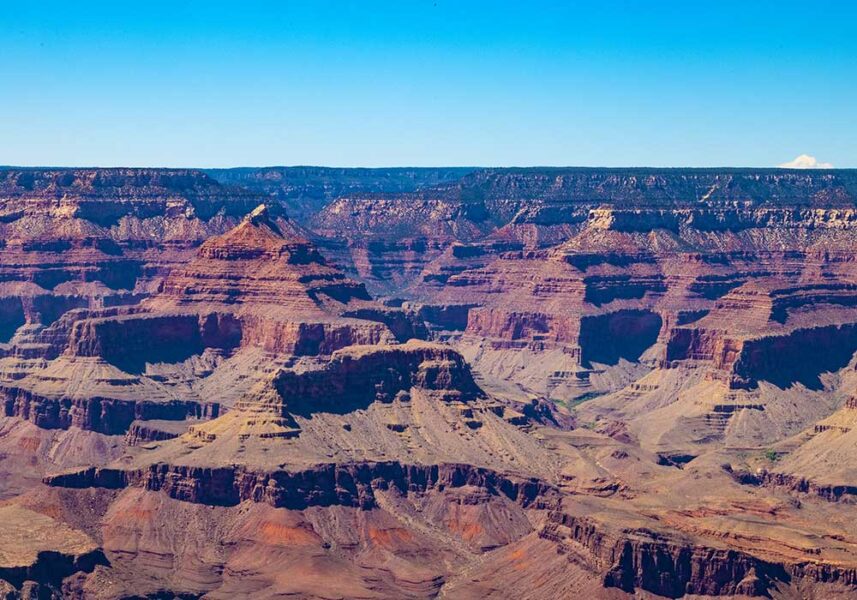
Contributing Editor Richard S. Wright Jr. is known for his awkwardness and tries to stay away from ledges and certain death even in the daytime. Day or night, he is most comfortable behind a camera or telescope.
 0
0









Comments
You must be logged in to post a comment.